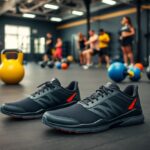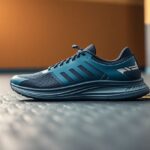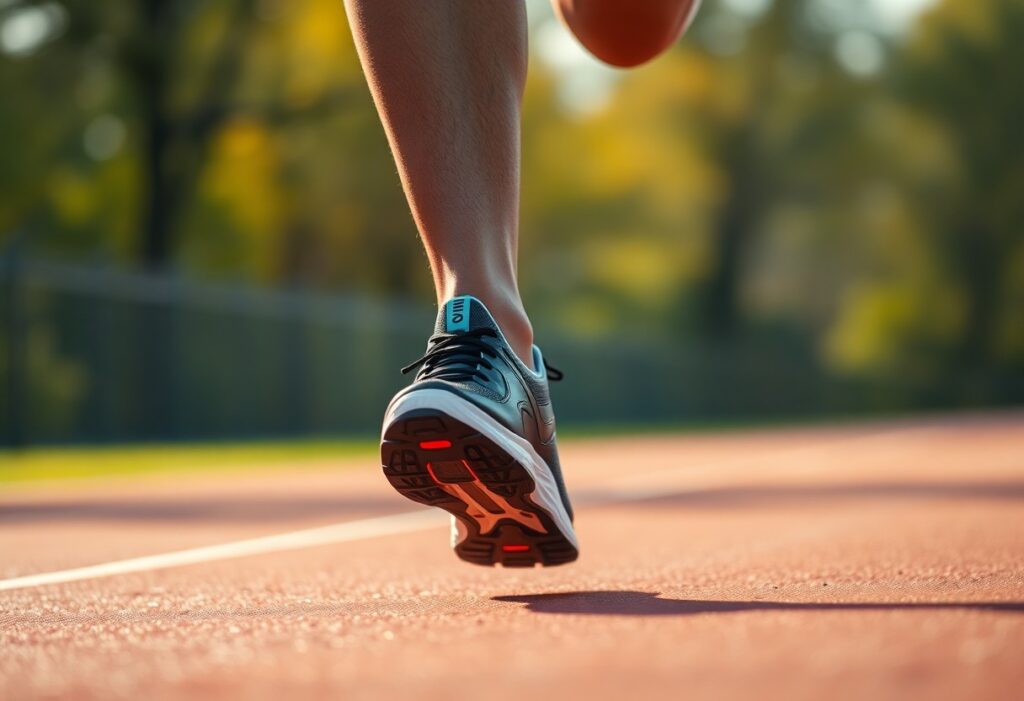
Delve into the revolutionary advancements in running footwear technology that have significantly transformed the performance landscape for endurance athletes. These innovations are paving the way for athletes to achieve unprecedented levels of efficiency during their runs.
The realm of performance optimisation in endurance running has undergone a remarkable transformation, primarily driven by the advent of advanced footwear technology. This evolution presents athletes with an array of opportunities to unlock their true potential. You will learn how innovative shoe designs can notably lower your metabolic expenditure and enhance running economy. By incorporating carbon fibre plates and state-of-the-art midsole materials, these advanced shoes offer exceptional energy return mechanisms that can potentially reduce your oxygen consumption by as much as 4%. Whether you’re a seasoned professional or a passionate amateur, grasping these biomechanical advancements will empower you to make educated choices regarding your running gear and may enhance your race times.
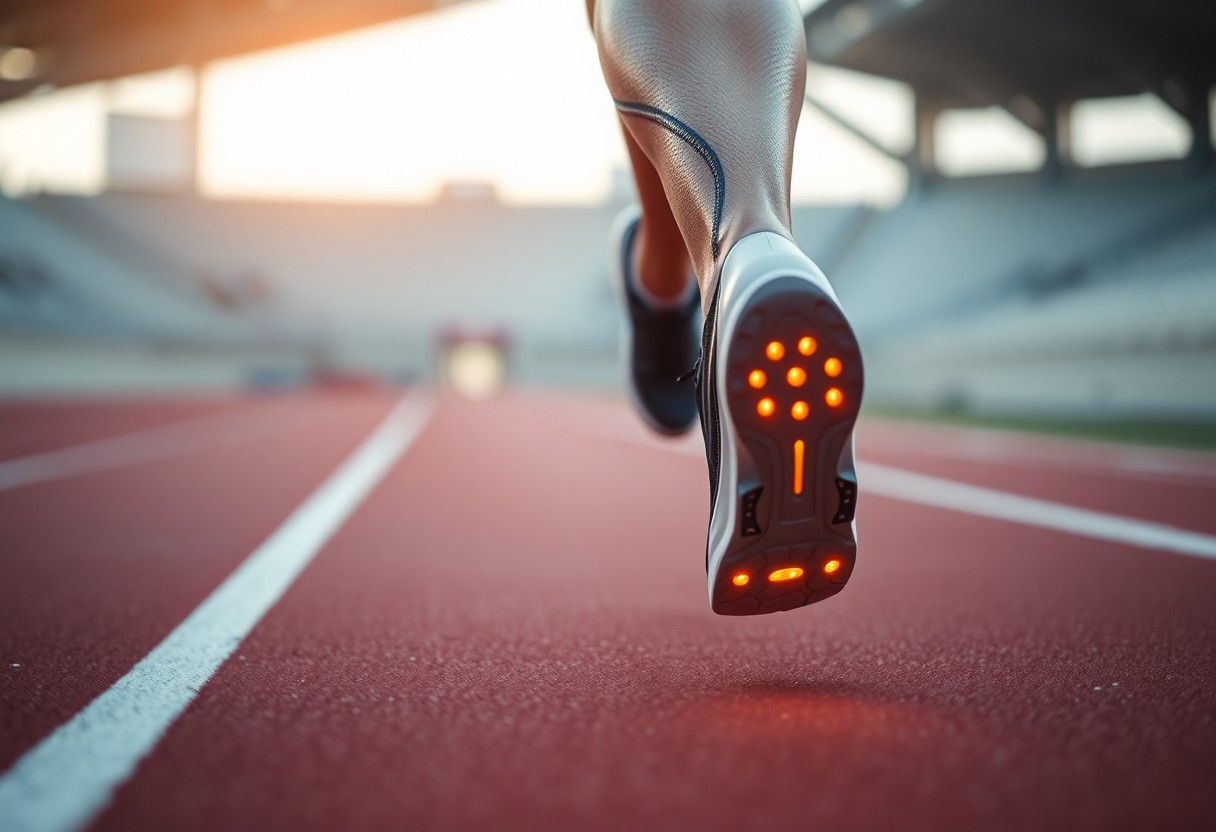 Continue reading to explore deeper into the mechanics of running footwear that are designed to boost performance:
Continue reading to explore deeper into the mechanics of running footwear that are designed to boost performance:
Unlocking the Science of Energy Return Mechanisms in Advanced Running Shoes
Advanced running shoe technology is rooted in intricate biomechanical principles, enabling a transformative energy transfer process during running. The cutting-edge design elements work in harmony to minimise metabolic expenditure, establishing a sophisticated system that enhances running efficiency through innovative material engineering and geometric configurations. By concentrating on the mechanics of energy return, these shoes provide runners with a substantial benefit, enhancing both performance and stamina. This allows for longer running sessions with diminished fatigue, which is crucial for those striving for optimal performance.
Investigating the Curvature Dynamics of Carbon Fibre Plates for Enhanced Performance
Carbon fibre plates are engineered with precise geometric configurations that effectively redirect kinetic energy throughout the running motion. Optimal curvature angles ranging from 12° to 15° facilitate maximum energy storage and return, with finite element modelling showcasing energy return efficiency of up to 93% in prototype designs. These expertly crafted plates function akin to springs, significantly reducing muscular effort during the toe-off phase. This design feature allows runners to conserve energy over extended distances, thereby enhancing both endurance and overall running performance.
Evaluating the Differences Between TPU and EVA in Midsole Technology Innovations
The choice of materials plays a crucial role in determining shoe performance, with thermoplastic polyurethane (TPU) emerging as a leading midsole technology. Comparative studies highlight TPU’s significant benefits in energy return and impact absorption, offering runners enhanced biomechanical efficiency across a range of running environments. The decision between TPU and EVA foam is vital for athletes aiming to maximise their performance while minimising injury risks during both training and competition.
| Energy Return | 18% higher in TPU |
| Oxygen Consumption Reduction | 2.4% lower with TPU |
A deeper exploration into midsole materials reveals intricate performance characteristics. TPU showcases superior resilience when compared to traditional EVA foam, ensuring consistent mechanical properties even after thousands of compression cycles. Runners benefit from improved energy return, reduced fatigue, and enhanced long-distance performance due to advances in material science, which can significantly influence their overall training outcomes and competition results.
| Impact Absorption | TPU absorbs 37% more force |
| Rebound Elasticity | 89% maintained across 50,000 cycles |
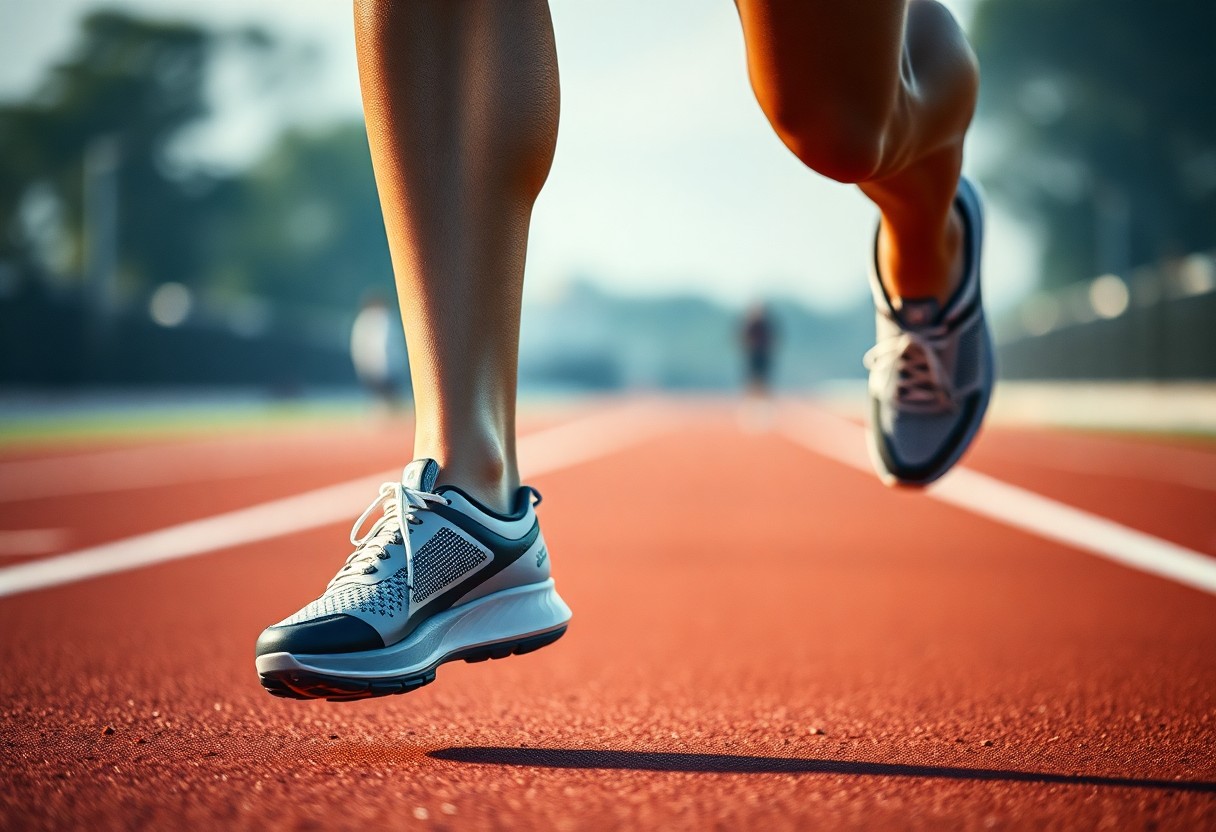 Join us as we further investigate the effects of advanced footwear technology on metabolic efficiency:
Join us as we further investigate the effects of advanced footwear technology on metabolic efficiency:
Evaluating Metabolic Efficiency: Identifying Who Gains Most from Advanced Footwear
Advanced footwear technology does not uniformly benefit all runners. Gains in metabolic efficiency can vary greatly among different demographic groups, with determining factors such as gender, age, and individual biomechanics playing pivotal roles in performance enhancement. Research has unveiled intricate patterns of metabolic response, indicating that the advantages of super shoes transcend mere performance metrics, incorporating complex physiological adaptations unique to each runner’s biomechanical profile.
Investigating Gender-Specific Enhancements in Performance Metrics
Female runners show a 3.2% improvement in metabolic power, whereas males experience a 4.2% enhancement, suggesting nuanced neuromuscular adaptations. Analysis of pelvic kinematics reveals a 14% greater reduction in hip adduction angle for females using advanced footwear, which may elucidate the subtle differences observed in metabolic gains between genders. Acknowledging these variations can inform tailored training regimens and footwear selections to optimise performance benefits for each gender.
Understanding Age-Related Benefits in Endurance Performance
Masters athletes aged 40 and above exhibit a 2.8% greater reduction in oxygen cost when utilising super shoes, likely compensating for diminished tendon elasticity. Analysis of tibial loading indicates a 12% cumulative stress reduction per kilometre among older runners, suggesting potential advantages in both injury prevention and performance sustainability. These insights underscore the significance of advanced footwear technology in prolonging the competitive lifespan of seasoned athletes.
The age-related benefits associated with advanced footwear technology extend well beyond basic performance metrics. Biomechanical studies indicate that older runners experience heightened adaptations due to compensatory mechanisms. Reduced tendon stiffness and modified muscle recruitment patterns interact with shoe technology to forge a distinctive performance enhancement profile. Specifically, the energy return mechanism provided by the carbon plate appears to counteract age-related biomechanical inefficiencies, potentially extending the competitive running careers of older athletes by alleviating the physiological constraints often faced by this demographic.
Continue reading to uncover further implications of advanced footwear technology on injury risks:
Examining the Influence of Running Footwear on Injury Risk Factors
The introduction of advanced footwear technology brings complex biomechanical interactions that necessitate a careful assessment of potential injury risks. Runners must weigh the benefits of performance enhancement against the physiological adaptations required. Longitudinal studies have revealed subtle yet significant alterations in muscular recruitment patterns, joint loading, and proprioceptive feedback associated with the transition to high-performance running shoes, highlighting the importance of a balanced training and recovery approach.
Injury Analysis: The Trade-Offs of Enhanced Performance
Biomechanical research indicates a significant 9% increase in Achilles tendon strain rates among users of super shoes during high-intensity training. Additionally, plantar pressure mapping reveals a 22% increase in forefoot loading compared to traditional trainers, particularly in challenging terrains such as downhill running. These findings imply that while metabolic efficiency may improve, runners must also adopt targeted strength and adaptation protocols to mitigate potential injury risks and safeguard long-term athletic health.
Modifying Training Protocols for Optimal Gait Adaptations
Your biomechanical response to advanced footwear necessitates strategic adjustments in your training regimen. Gait retraining is essential to optimise the unique energy return mechanisms inherent in carbon-plated shoes. Runners must concentrate on developing neuromuscular patterns that align with the shoe’s biomechanical design, which can help to lower injury risks and maximise performance benefits.
Comprehensive strategies for gait adaptation involve multifaceted approaches to successfully integrate advanced footwear technology. Biomechanical assessments indicate that runners typically require 6-8 weeks of progressive training to fully acclimatise to the distinctive mechanical properties of super shoes. This adaptation phase should include targeted eccentric strengthening protocols, modified interval training techniques, and diligent monitoring of lower limb biomechanics. Professional athletes and dedicated runners will find considerable advantage in periodic 3D gait analysis to track subtle shifts in movement patterns, ensuring optimal integration of advanced footwear technology with their individual biomechanical characteristics.
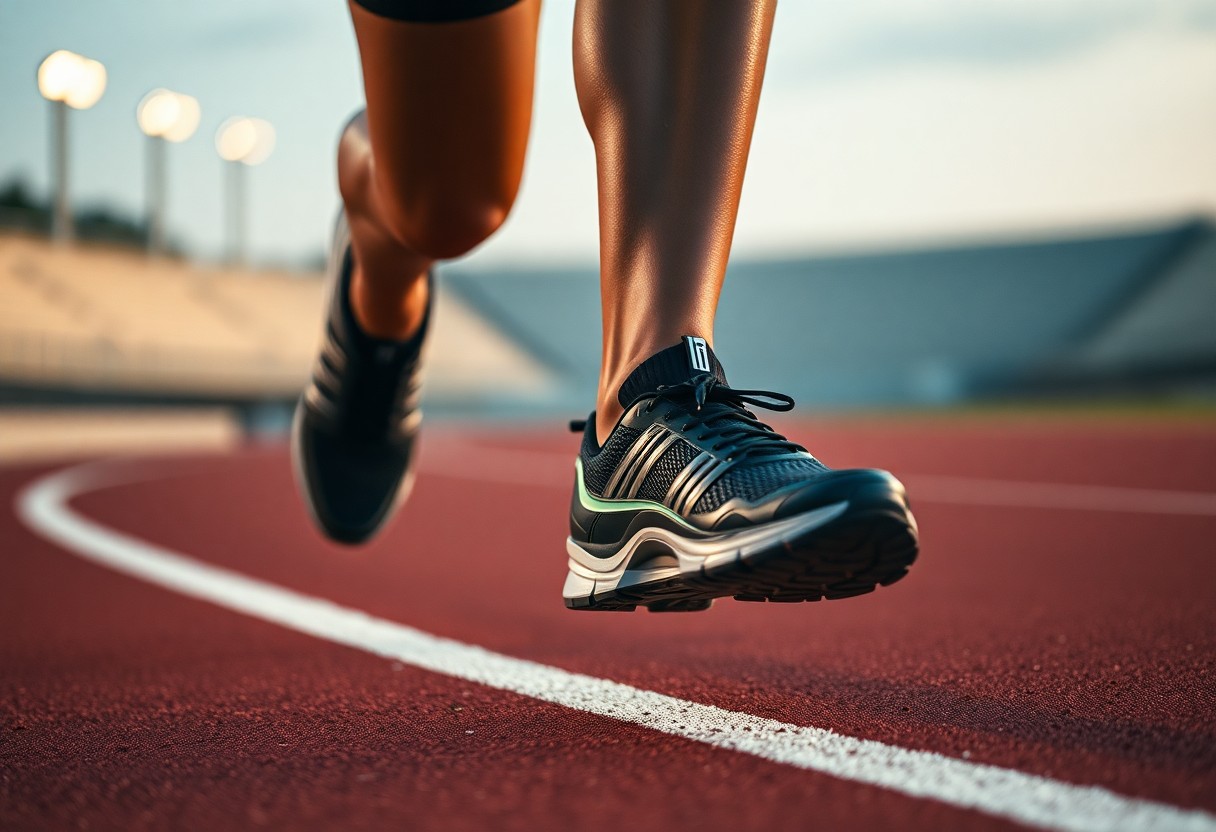 Explore the future of footwear technology and its potential implications for runners:
Explore the future of footwear technology and its potential implications for runners:
Revolutionising Running Footwear Technology: Future Innovations on the Horizon
Emerging technologies are set to redefine running shoe design, pushing the limits of biomechanical efficiency and performance optimisation. Cutting-edge research is focusing on personalised solutions that adapt to individual biomechanics, utilising advanced materials, computational modelling, and integrated sensor technologies to forge a new generation of intelligent footwear crafted for elite athletes.
Transforming Footwear Design with 3D Printed Midsoles for Enhanced Performance
Optimisation algorithms for lattice structures now enable precise regional stiffness variations, tailored to individual foot pressure maps. Prototype evaluations illustrate a 5.1% increase in metabolic savings when compared to mass-produced models, with computational design facilitating unprecedented customisation of midsole geometries to maximise energy return while minimising biomechanical stress. This forward-thinking approach ensures that each runner can achieve performance that is optimally tailored to their unique physical attributes.
Integrating Smart Technology for Enhanced Performance Monitoring Capabilities
Innovative sensor technologies are transforming running shoes into sophisticated performance tracking devices. Real-time ground reaction force feedback systems can achieve a 1.9% reduction in oxygen cost through micro-adjustments in cadence, providing runners with immediate biomechanical feedback during training and competition. These advancements are vital for athletes striving to fine-tune their techniques and performance metrics.
The integration of advanced sensors marks a significant leap in performance monitoring technology. Multi-axis accelerometers, pressure-sensitive matrices, and embedded microprocessors are now capable of capturing complex biomechanical data with exceptional accuracy. These intelligent systems analyse gait mechanics, impact forces, and energy expenditure in real-time, offering runners detailed insights into their movement patterns. Machine learning algorithms are now capable of predicting potential injury risks, optimising training loads, and suggesting personalised technique adjustments based on comprehensive movement analysis, effectively transforming running shoes from mere equipment into proactive tools for performance optimisation.
Finally, gain a comprehensive understanding of the transformative landscape of advanced footwear technology in endurance running:
Welcoming the Future of Advanced Footwear Technology in Endurance Running
In summary, you have explored the transformative landscape of advanced footwear technology within the realm of endurance running. Your knowledge now encompasses how innovative design elements such as carbon plates and high-performance midsole materials can significantly lower metabolic costs while enhancing running efficiency. By leveraging scientific insights, you can recognise that these shoes offer more than just minor improvements; they signify a paradigm shift in athletic performance. Your investment in such advanced technology has the potential to translate into improved running economy, decreased energy expenditure, and optimised biomechanical responses across diverse athletic populations.
The Article Biomechanical Efficiency of Advanced Footwear Technology: Metabolic Cost Reduction and Performance Enhancement in Endurance Running appeared first on My Shoes Finder.
The Article Biomechanical Efficiency in Advanced Footwear for Runners Was Found On https://limitsofstrategy.com

